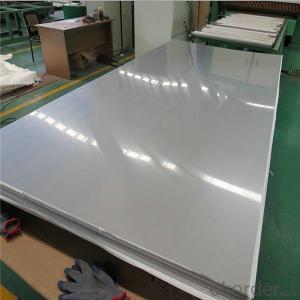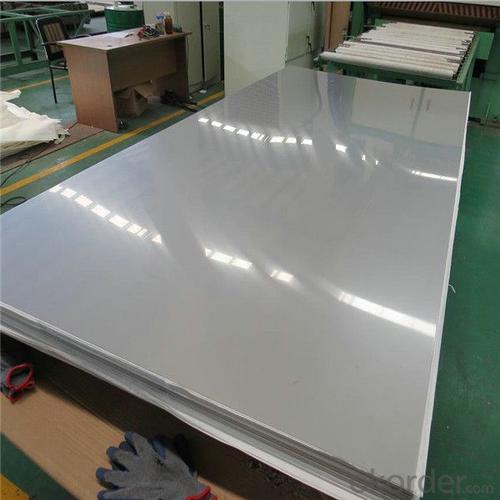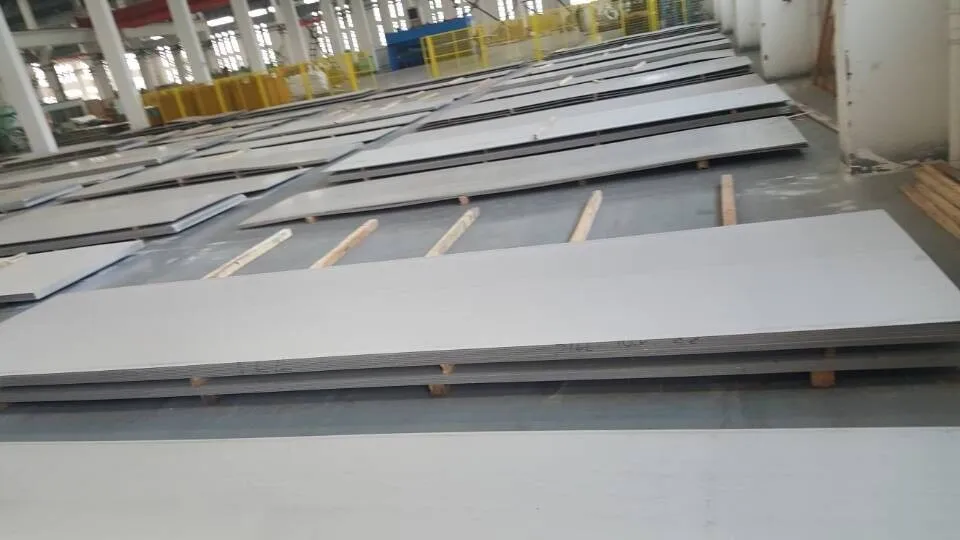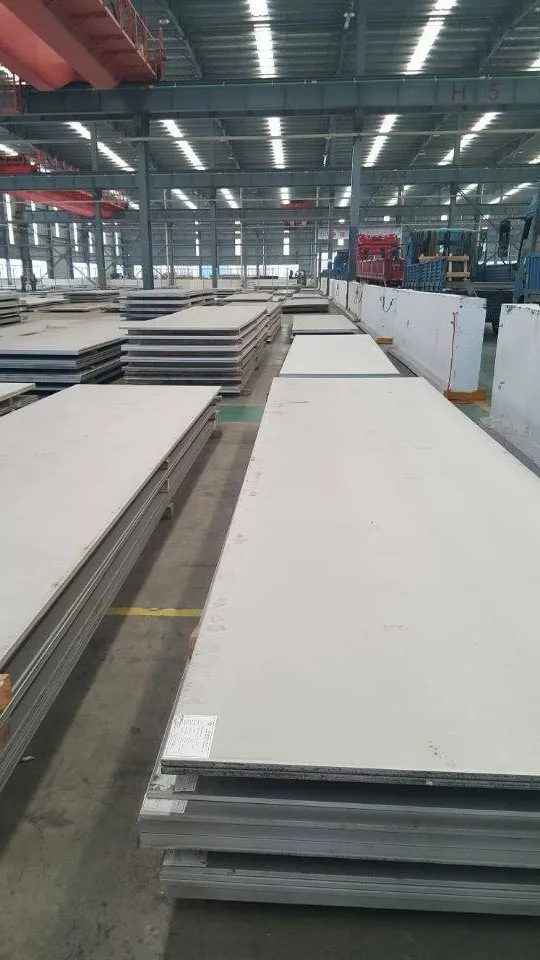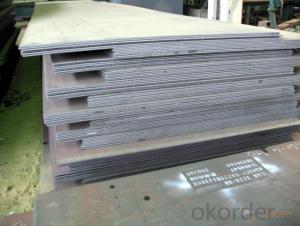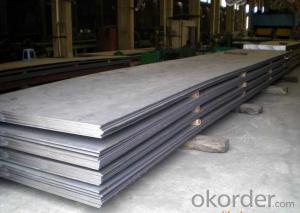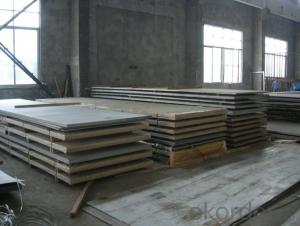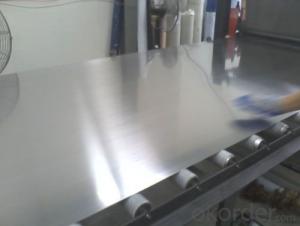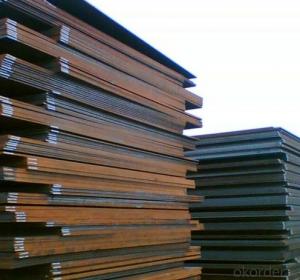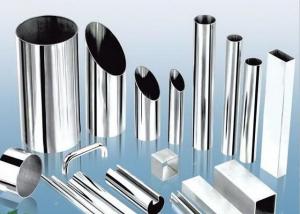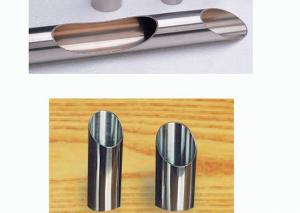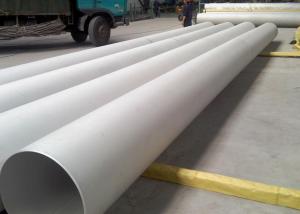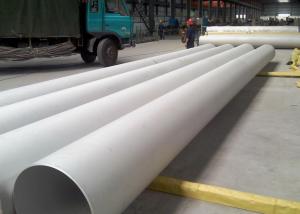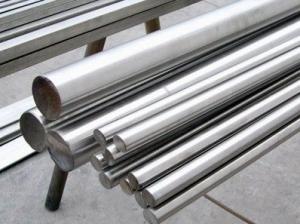Stainless Steel Plate 8mm 10mm Thickness
- Loading Port:
- Shanghai
- Payment Terms:
- TT OR LC
- Min Order Qty:
- 2 m.t.
- Supply Capability:
- 20000 m.t./month
OKorder Service Pledge
OKorder Financial Service
You Might Also Like
Specification
2205 2507 2520 duplex stainless steel plate
We are a professional manufacturer of stainless steel sheet. According to ASTM, JIS and AISI,GB, standards, Jaway steel enhances effectiveness and of quality control from selecting the raw materials, cutting, slitting, shearing, surface treatment, packing, exporting of the existing products.
Product Description
Product Information
| Description | Stainless Steel Sheet, Cold Rolled Stainless Steel Sheet, Hot Rolled Stainless Steel Sheet |
| Type | 201 202 304 316L 310S 309S 321 316Ti 410 420 430 409 duplex,SAF2205,S31803 |
| Thickness | 0.3-60mm |
| Width | 500-2000mm or customized |
| Length | 1000-6000 or customized |
| Standardsize | 1000×2000mm, 1250×2500mm, 1219×2438mm, 1500×3000mm |
| Surface | 2B, No.1, No.4, HL, BA, 8K etc |
| Standard | ASME, ASTM, EN ,BS,GB,DIN, JIS etc |
| Application | Stainless steel sheet applies to construction field, ships building industry, petroleum & chemical industries,war and electricity industries, food processing and medical industry, boiler heat exchanger,machinery and hardware fields. |
Other information
| Certificate | BV, ISO, CE, SGS etc |
| Brand | TISCO, BAOSTEEL, JISCO, POSCO, LIANZHONG etc |
| Payment Item | 30% TT 70% by B/L copy or L/C at sight |
| Packing | Standard export sea-worthy packing |
| Delivery time | 5-20 days after deposit |
| Advantage | Our company has cooperative relation between the domestic agents. Stainless steel sheet can be made accordingto the customers requirements. Quality assured, Price competitive, Alibaba Trade Assurance and Deliery fast. |
Surface Description

| Surface | Definition | Application |
| 2B | Those finished, after cold rolling, by heat treatment, pickling or other equivalent treatment and lastly by cold rolling to given appropriate luster. | Medical equipment, Food industry, Construction material, Kitchen utensils etc. |
| BA (No.6) | Those processed with bright heat treatment after cold rolling. | Kitchen utensils, Electric equipment, Building construction etc. |
| Mirror (No.8) | Shinning like a mirror | Building construction, decoration etc. |
| No.3 | Those finished by polishing with No.100 to No.120 abrasives specified in JIS R6001. | Kitchen utensils, Building construction etc. |
| No.4 | Those finished by polishing with No.150 to No.180 abrasives specified in JIS R6001. | Kitchen utensils, Building construction, Medical equipment etc. |
| Hairline | Those finished polishing so as to give continuous polishing streaks by using abrasive of suitable grain size. | Building Construction etc. |
| No.1 | The surface finished by heat treatment and pickling or processes corresponding there to after hot rolling. | Chemical tank, pipe etc. |
Products Show
These are the normal items, for the special requirements,we can also meet.
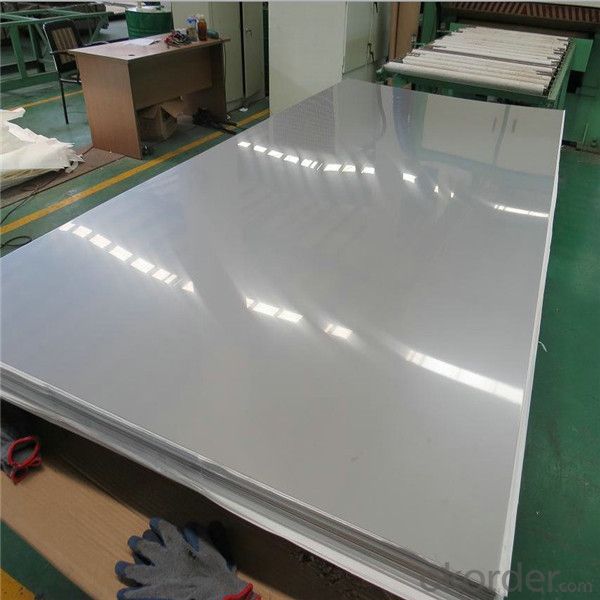
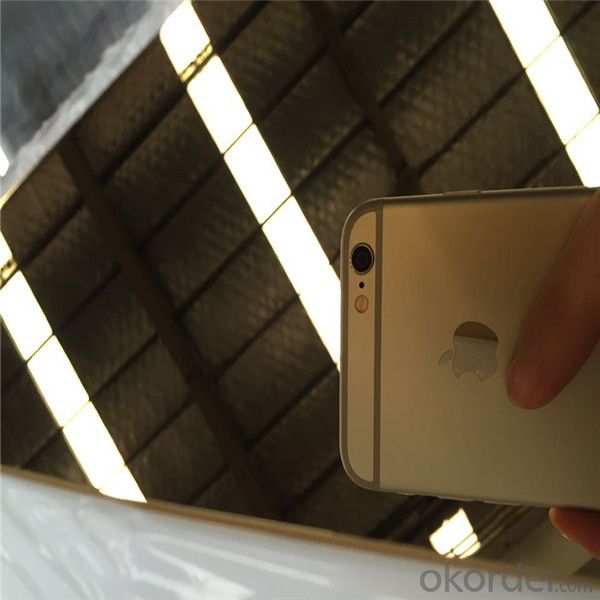
Our Advantages
• All products are made of high-quality imported raw materials.
• Our products are certified by ISO9001:2008 authentication quality systems.
• we are nominated as the AAA enterprise by Jiangsu government.
• Quick Response to Your Enquiry.
- Q: How to clean stainless steel plate cleaning?
- If ordinary water leaves some dirt or grease, try adding a mild detergent to the water. The method I used was derived from natural, biodegradable detergent and found that it removed a little water and missed it, including some oils. If you clean stainless steel pots or cutlery, this is the best way to use them. The food on the cooked food can usually be removed from the pan, soaked in soapy water, and with a mild sponge sponge pad. Don't be impatient to use steel wool, it may scratch stainless steel or leave particles that may rust. Again, remember to rinse and dry the stainless steel after cleaning.
- Q: 304 stainless steel has several advantages, a few big advantages, the more concrete the better
- 304 stainless steel advantages:1. environmental sanitation: put an end to red water, blue green water, and hidden water problems, no peculiar smell, no harmful substances, keep the water quality pure, lead free, harmless to human health.2., wear resistance: beautiful surface, clean and bright, long lasting, no scratches, never rust, never break. 3., low temperature: kitchen, bathroom, stainless steel water pipe, faucet angle valve will never break.4., thermal expansion and excellent insulation performance: stainless steel tube has expansion, cold contraction, slow insulation performance.5. authority certification: stainless steel metal element precipitation than WHO and European drinking water act standard value of 5% is still lower.
- Q: Can stainless steel sheets be used in manufacturing processes?
- Yes, stainless steel sheets can be used in manufacturing processes. Stainless steel is a versatile material known for its corrosion resistance, durability, and strength. It is commonly used in various manufacturing industries such as automotive, construction, aerospace, and food processing. Stainless steel sheets can be fabricated, formed, and shaped to meet specific requirements, making them suitable for a wide range of manufacturing applications.
- Q: What about black titanium stainless steel?
- It is not easy to strip the black of the board for the purpose of etching the logo. There is hardly a chemical that can pass black. The so-called qualified fade, that is, after fading black, to ensure that the bottom of the mirror stainless steel. Without this standard, a strong acid or ferric chloride would corrode, but the surface black would have been roughened and not shiny, which would have been unsuccessful and less useful.
- Q: Can stainless steel sheets be used for lighting fixtures?
- Indeed, lighting fixtures can utilize stainless steel sheets. Stainless steel, a material renowned for its versatility and durability, finds wide application in numerous fields, including lighting fixtures. It boasts various advantages, such as resistance to corrosion, remarkable strength, and aesthetic allure. By employing stainless steel sheets, one can effortlessly mold, fabricate, and weld them to generate diverse lighting fixture designs and finishes. Furthermore, stainless steel's reflective surface heightens the lighting effect, ultimately creating an eye-catching and brilliantly illuminated atmosphere. Hence, due to their lastingness, adaptability, and aesthetic attributes, stainless steel sheets prove to be a fitting choice for lighting fixtures.
- Q: What is the minimum thickness available for stainless steel sheets?
- The minimum thickness available for stainless steel sheets can vary depending on the specific grade and manufacturing capabilities, but it is typically around 0.4 millimeters (0.0157 inches) or even thinner.
- Q: What are the different types of stainless steel sheet finishes for sanitary applications?
- There are several types of stainless steel sheet finishes commonly used for sanitary applications, including #4 brushed finish, #8 mirror finish, and bead blast finish. The #4 brushed finish provides a smooth and uniform appearance with a slight texture, making it resistant to scratches and easy to clean. The #8 mirror finish is highly reflective and has a polished surface, making it aesthetically appealing and suitable for applications where hygiene is crucial. The bead blast finish has a matte texture with a uniform grain, offering a non-reflective surface that is resistant to fingerprints and often used in high-traffic areas.
- Q: Are stainless steel sheets good for heat exchangers?
- Yes, stainless steel sheets are good for heat exchangers. Stainless steel is a popular choice for heat exchangers due to its excellent corrosion resistance, high temperature resistance, and strength. It can withstand extreme temperatures and pressures, making it ideal for various industrial applications. Additionally, stainless steel sheets offer good thermal conductivity, allowing for efficient heat transfer between fluids. Their durability and resistance to fouling and scaling also contribute to their suitability for heat exchangers, ensuring long-term performance and reliability.
- Q: Are stainless steel sheets resistant to acids?
- Acids don't stand a chance against stainless steel sheets. This remarkable material is famous for its ability to resist corrosion, and that includes acids too. You see, stainless steel contains chromium, which forms a protective layer called a passive film. This film acts like a barrier, preventing acids from reacting with the metal. It's like a superhero shield against a wide range of organic and inorganic acids. Of course, the level of resistance can vary depending on the type of stainless steel. Grades such as 304 and 316 are especially tough against acids, which makes them perfect for industries like chemical processing, food processing, and pharmaceuticals. But let's not forget, even though stainless steel sheets can handle acids pretty well, there are some aggressive acids and highly corrosive environments that can still break through their defenses. So, it's crucial to seek advice from experts and choose the right grade of stainless steel for acid-resistant applications.
- Q: Are stainless steel sheets suitable for architectural panels?
- Architectural panels can indeed be made from stainless steel sheets, which offer a plethora of benefits. Stainless steel is a remarkably versatile and durable material that is resistant to corrosion, staining, and rust. This makes it an excellent choice for exterior applications, where exposure to harsh weather conditions is expected. Furthermore, stainless steel maintains its appearance over time, ensuring that architectural panels retain their aesthetic appeal for many years. What sets stainless steel apart is its capacity to offer a wide range of design possibilities. It can be fabricated into various shapes and sizes, allowing for the creation of unique and visually captivating architectural panels. Architects and designers can also choose from different finishes, including brushed, polished, or patterned, to achieve the desired look and feel for their projects. Moreover, stainless steel is environmentally friendly due to its full recyclability. By opting for stainless steel sheets for architectural panels, architects and designers can contribute to reducing the environmental impact of construction projects. All in all, stainless steel sheets provide an exceptional combination of strength, aesthetics, and sustainability, making them highly suitable for architectural panels. Whether it be for exterior cladding, interior partitions, or decorative elements, stainless steel offers a durable, versatile, and visually appealing solution for architectural design.
Send your message to us
Stainless Steel Plate 8mm 10mm Thickness
- Loading Port:
- Shanghai
- Payment Terms:
- TT OR LC
- Min Order Qty:
- 2 m.t.
- Supply Capability:
- 20000 m.t./month
OKorder Service Pledge
OKorder Financial Service
Similar products
Hot products
Hot Searches
Related keywords
